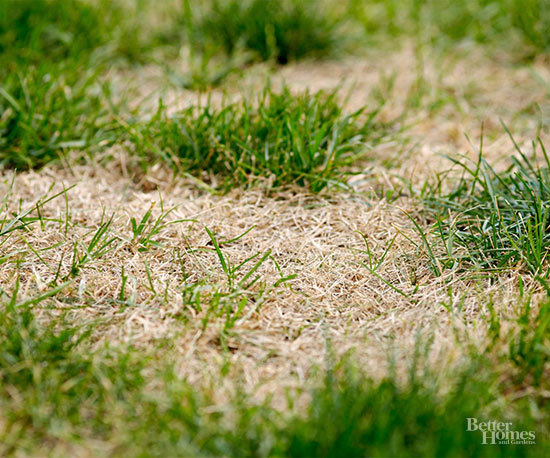
Dead circles or spots can be due to many, many things, so I'll name a few of them off and see if any of these seem to fit your situation:
- Dog urine: Do you have pets? Do your neighbors? If so, do what you can to keep them off. If that's impossible, you're stuck with repairing damage after the fact by reseeding larger spots, and letting smaller spots grow back in on their own. A little gypsum on the dead area might help speed the recovery, but once the damage is done, it just takes time (or grass seed) to regrow grass in that spot.
- Fungal disease: These tend to come and go according the season and weather conditions. Fall isn't normally a time when fungal patch diseases spread, so this may not be the problem. But if it is the problem, you can do two things: First, to cure the problem immediately, you can apply fungicide, available at garden centers. Longer term, a healthy, well-fertilized, and watered lawn in the upper midwest doesn't typically experience serious fungal problems -- a bit of brown patch in mid/late summer is usually the extent of it. It's usually not serious enough to warrant treatment, unless you're really picky about having a perfect lawn. So think about your lawn care, and if you are mowing too short (you should mow at 2-3 inches), or not fertilizing, or letting the lawn go dry in summer, then that may contribute to the problem. Changing your lawn care to keep the lawn as healthy as possible is the best way to deal with fungus. The best way to tell if dead patches are fungal is to track when they occur -- if patches start dying out during hot, dry spells in summer, that's a fungus. They may persist through fall, but the damage was done in summer.
- Grubs: Grubs usually cause larger patches to die out, and they are usually irregular in shape. But if you dig into a dead area and find lots of grubs, then this may be the problem. Grab a section of grass at the edge of a dead patch; if it pulls up like a carpet with no roots, it's certain that it's grubs. Apply a grub killer according to package directions, and that should fix you up.
- Fairy rings: Most lawns have them, and they often get larger and more numerous over time. It's a fungus that doesn't actually attack the lawn, but it lives in the lawn and sends up mushrooms now and then. You'll see an unusually green ring or crescent that gradually expands year after year. The only problem is that the grass inside the ring sometimes dies out (for reasons that aren't completely understood). You can treat with a fungicide, but I recommend just tolerating it. A little extra watering in summer usually counteracts the problem.
continue reading below
- There are other possibilities, including any kind chemical that might be getting on the lawn (cleaners, motor oils, etc.); annual weeds that die out in fall, leaving behind a dead spot; and even weed controls applied improperly (too high a dose, for example). You have to put on your detective hat and think about whether anything you are doing might be causing this.
Local cooperative extension offices or master gardeners might be able to help identify the problem too, if you supply a sample for them to look at.






